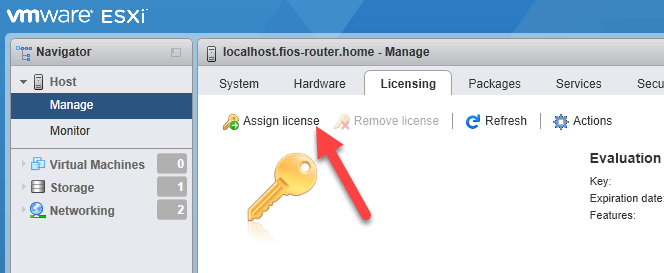
- #Vmware esxi 6.7 vs 6.5 how to
- #Vmware esxi 6.7 vs 6.5 install
- #Vmware esxi 6.7 vs 6.5 drivers
- #Vmware esxi 6.7 vs 6.5 update
#Vmware esxi 6.7 vs 6.5 update
Hence, the update and upgrade process for ESXi hosts can be divided into the following steps:

If you have chosen to remediate multiple ESXi hosts, the process of remediating the second host begins once the process of remediating the first ESXi host is finished. When remediation is done, ESXi hosts exit the maintenance mode, and a host reboot may be required. ESXi hosts enter the maintenance mode automatically when remediating. Remember that in the most cases virtual machines must be shut down or migrated from ESXi hosts before starting remediation when you seek to update or upgrade these hosts. Attaching the baseline to the required entity (ESXi host, datacenter, cluster etc.).Uploading the needed installation file to Update Manager.How ESXi Patching Worksīasically, the workflow of ESXi patching consists of the following:
#Vmware esxi 6.7 vs 6.5 install
Also, be sure to check the compatibility of your hardware with ESXi patches before you install these patches. You can use VMware interoperability matrices on the VMwareâs web site. Compatibilityīefore starting the upgrading/updating process, be sure to check the compatibility of your current vCenter version with the new ESXi version, compatibility of your current ESXi version with the upgrade version, and compatibility of your backup software with new ESXi and vCenter versions that you will use after the upgrade/update.
#Vmware esxi 6.7 vs 6.5 drivers
VMware Update Manager is universal and allows you to install VMware patches and third-party patches such as Cisco distributed virtual switch, updated drivers for Hewlett-Packard servers, etc. You can also automate the ESXi patch installation. Such an approach also allows you to manage VMware patches centrally by using vCenter with VMware vSphere Client and helps you save time spent on vSphere administration. The advantages of using VMware Update Manager include flexibility and the possibility to install VMware patches on multiple hosts at once. This way, you can update or upgrade multiple entities at once. You can also install and update software such as drivers on ESXi hosts, upgrade VM hardware, install and update VMware Tools. VMware vCenter is a centralized management system for vSphere, and vSphere Update Manager is a centralized tool for updating/upgrading ESXi hosts, VMs, virtual appliances, and virtual applications ( VMware vApps). It is recommended that you install vCenter 6.7 as VCSA â in this case, vCenter is running as a virtual machine (VM) on an ESXi server. If you have installed vCenter Server Appliance (VCSA) version 6.5 or later, then vSphere Update Manager has been pre-installed in vCenter by default and starts automatically. VMware Update Manager can be installed on the machine with vCenter or on another Windows machine and must have network connectivity with vCenter since VUM is tightly integrated with vCenter Server.

If vCenter Server 6.5 is installed on Windows, you should install vSphere Update Manager (VUM) manually. VMware vSphere Update Manager is a vCenter plug-in (extension) that must be installed manually on vCenter Server versions older than vCenter 6.5. Participate in our Try & Buy Promotion and get the opportunity to receive an Amazon Gift Card for testing NAKIVO Backup & Replication in your environment.

Our comprehensive software offers robust protection of business data and applications.
#Vmware esxi 6.7 vs 6.5 how to
Todayâs blog post covers VMware vSphere Update Manager and explains how to upgrade and update ESXi hosts centrally. Fortunately, VMware provides vSphere Update Manager that can be used to update ESXi hosts from the single interface. If the number of ESXi hosts required is high, patching each host in ESXCLI can take a lot of time and effort, especially if you have hosts of different versions. How to Patch ESXi with VMware Update Manager: Complete WalkthroughĮSXi hosts can be patched in the command line interface by using ESXCLI, though this method is most advantageous when the number of ESXi hosts you need to patch is not high.


 0 kommentar(er)
0 kommentar(er)
